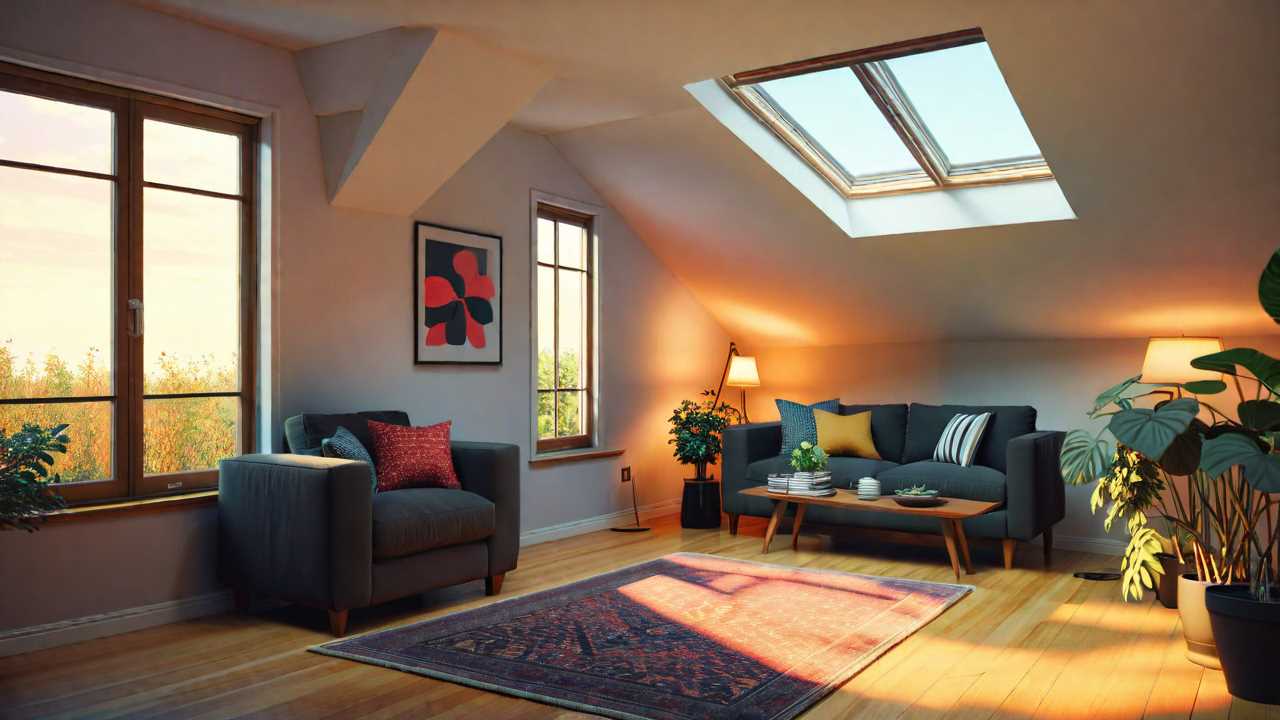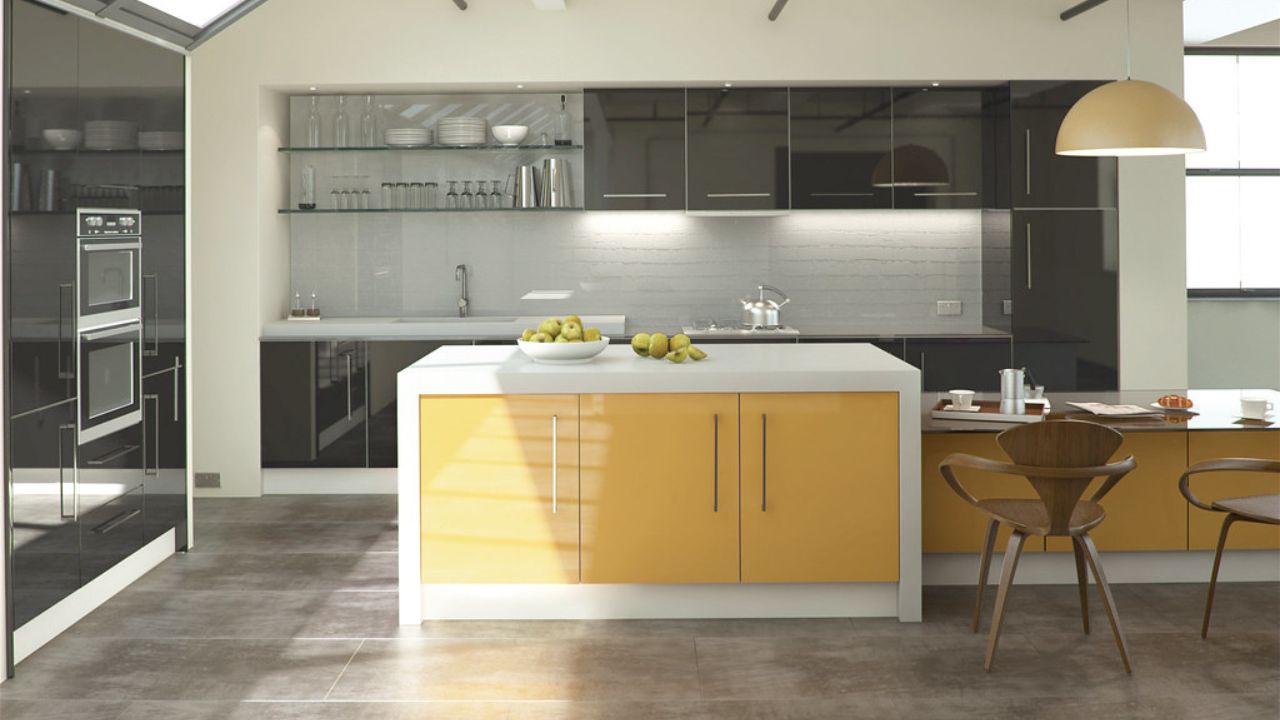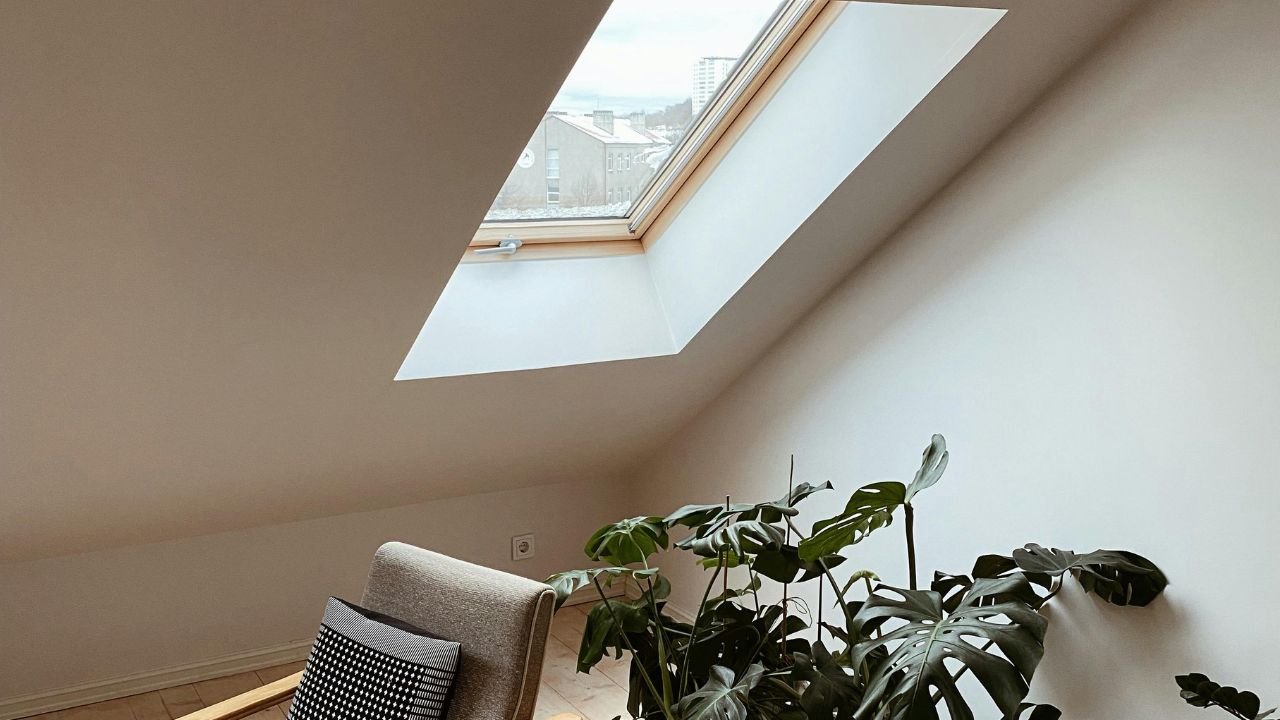
To improve heat loss from skylights effectively, consider implementing various strategies that can boost insulation and energy efficiency. Insulating skylights with thermal curtains and sealing gaps around the skylight frame are practical steps to reduce heat transfer. Additionally, installing double-glazed skylights, utilizing window film for added insulation, and incorporating skylight shades or blinds can all contribute to minimizing heat loss. By implementing these methods, you can create a more sustainable and comfortable indoor environment while also reducing energy consumption.
Insulate Skylight With Thermal Curtains
To effectively prevent heat loss from skylights, consider insulating them with thermal curtains. Skylights are notorious for allowing heat to escape during colder months and letting unwanted heat in during warmer seasons. Thermal curtains act as a barrier, reducing heat transfer through the glass panes. Research shows that properly insulating skylights with thermal curtains can significantly decrease energy costs associated with heating and cooling your home.
When choosing thermal curtains for your skylights, opt for ones with multiple layers of fabric and a thick lining. This design helps trap air between the curtain and the skylight, creating an additional insulating layer. Additionally, look for curtains with a high R-value, indicating better thermal resistance.
Installation is key to maximizing the effectiveness of thermal curtains. Make sure that the curtains fit snugly around the skylight frame, leaving no gaps for air to seep through. By taking these steps, you can enjoy a more comfortable indoor environment while reducing your energy consumption and costs.
Seal Gaps Around Skylight Frame
Consider inspecting and sealing any gaps around the skylight frame to further improve its insulation properties and minimize heat loss. Gaps around the skylight frame can be a major source of heat loss in a building. These small openings allow warm air to escape during the winter and cool air to seep out during the summer, leading to increased energy consumption and reduced comfort levels. By carefully examining the area where the skylight meets the roof, you can identify any gaps or cracks that need to be sealed.
To seal these gaps effectively, you can use weather-stripping materials or caulking to create a tight seal around the skylight frame. Weather-stripping is particularly useful for sealing movable parts of the skylight, such as operable windows, while caulking can be used to fill in any stationary gaps. Properly sealing these areas won’t only help prevent heat loss but also improve the overall energy efficiency of your home or building. By taking the time to seal gaps around your skylight frame, you can optimize its performance and contribute to a more comfortable indoor environment.

Install Double-Glazed Skylight
Installing a double-glazed skylight improves energy efficiency by reducing heat transfer and boosting insulation properties. Double-glazed skylights consist of two panes of glass separated by a layer of gas, usually argon or krypton, which acts as an additional insulating barrier. This design significantly reduces the amount of heat that can escape through the skylight, helping to maintain a comfortable indoor temperature while lowering heating costs.
Research has shown that double-glazed skylights can decrease heat loss by up to 50% compared to single-pane skylights. The insulating properties of the double glazing also help to minimize condensation on the interior pane, preventing issues such as mold growth and water damage.
When choosing a double-glazed skylight, look for high-quality materials and proper installation to guarantee optimal performance. By investing in a double-glazed skylight, you not only improve energy efficiency but also enhance the overall comfort and sustainability of your home.
Use Window Film for Insulation
Using window film for insulation improves the energy efficiency of your home by reducing heat loss and boosting thermal performance. Window film acts as a barrier that helps retain heat during colder months and blocks out excessive heat in warmer seasons.
Here are five key benefits of using window film for insulation:
- Enhanced Insulation: Window film provides an additional layer of insulation, reducing the transfer of heat through your skylight.
- UV Protection: Some window films offer UV protection, helping to prevent furniture and flooring from fading due to sun exposure.
- Easy Installation: Window film is relatively easy to install and can be a cost-effective solution compared to other insulation methods.
- Maintains Visibility: Unlike some window coverings, window film allows you to maintain visibility through your skylight while still providing insulation benefits.
- Customizable Options: Window film comes in various styles and tints, allowing you to choose one that complements your home’s aesthetics while improving energy efficiency.
Consider incorporating window film as a practical insulation solution for your skylight to enjoy improved thermal performance and energy savings.
Consider Skylight Shades or Blinds
To further improve the thermal performance of your skylight and mitigate heat loss, exploring the option of skylight shades or blinds is a practical step. Skylight shades or blinds act as insulating barriers, reducing heat transfer through the skylight during both hot and cold seasons. By adding a layer of material that can trap air between the skylight and the room, shades or blinds create an additional buffer against heat loss.

When selecting shades or blinds for your skylight, consider the material and design that best suits your needs. Honeycomb or cellular shades are excellent choices for insulation due to their air-trapping design. These shades have pockets that prevent heat from escaping through the skylight. Additionally, roller shades with reflective properties can help regulate the amount of sunlight entering the room, reducing heat gain in the summer and heat loss in the winter.
Installing skylight shades or blinds gives you the freedom to control the amount of light and heat that enters your space while enhancing the energy efficiency of your home.
Frequently Asked Questions
Can Skylight Insulation Reduce Energy Bills Significantly?
Thinking skylight insulation won’t make a big difference in your energy bills? Think again! Research shows that properly insulating skylights can lead to significant savings, making it a smart investment for your home.
How Long Do Thermal Curtains Typically Last?
Thermal curtains typically last 2-5 years, depending on usage and quality. Regularly cleaning and maintaining them can extend their lifespan. When considering skylight heat loss prevention, durable thermal curtains offer an effective solution for insulation.
Are There Any Health Benefits to Reducing Heat Loss?
Reducing heat loss can lead to health benefits by creating a more comfortable living environment. Lowering energy consumption can improve air quality and reduce respiratory issues. Proper insulation and sealing can boost overall well-being.
Will Double-Glazed Skylights Provide UV Protection?
When you choose double-glazed skylights, you’ll enjoy UV protection akin to sunscreen for your home. This glass technology filters out harmful rays while letting natural light in, creating a cozy and safe environment.
Do Skylight Shades Affect Natural Light Levels Indoors?
Skylight shades can impact indoor natural light levels significantly. They offer control over brightness and heat gain while maintaining privacy. You can adjust them to balance light and temperature, enhancing comfort and energy efficiency in your space.